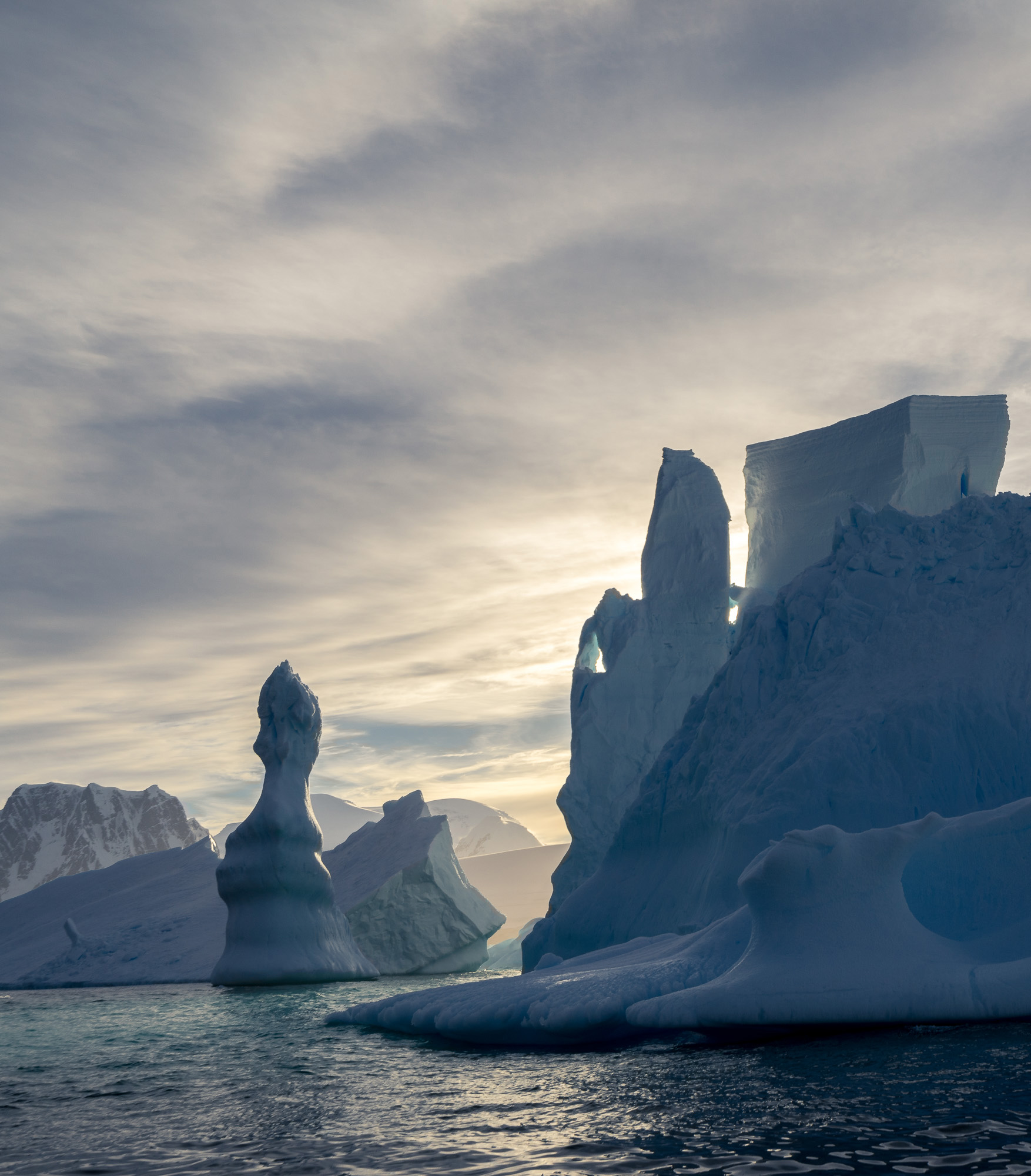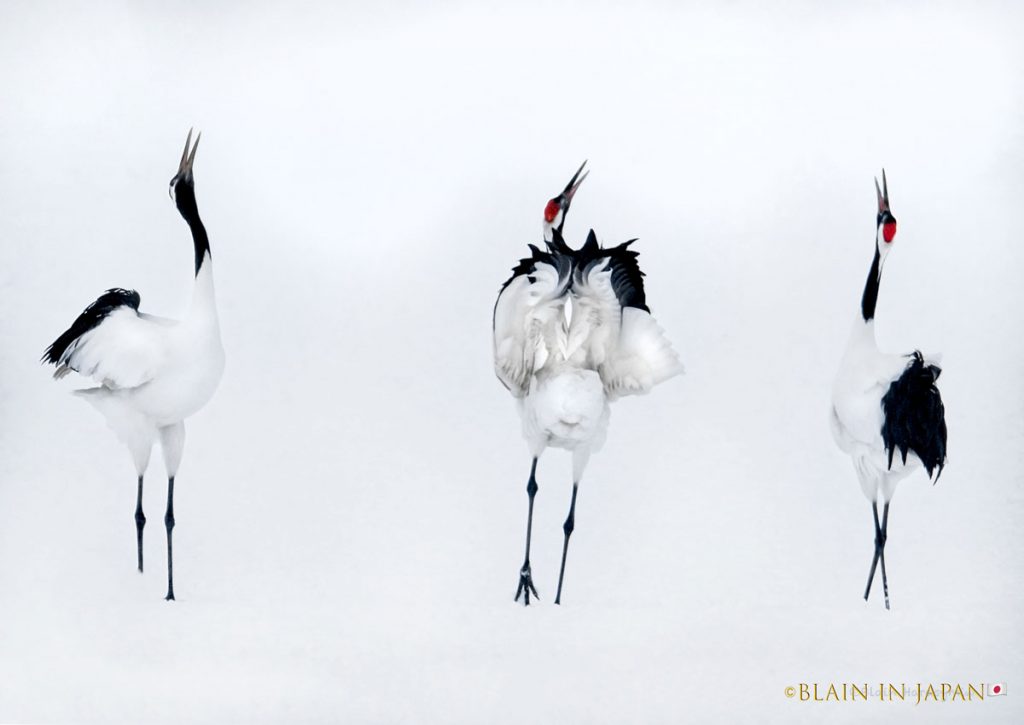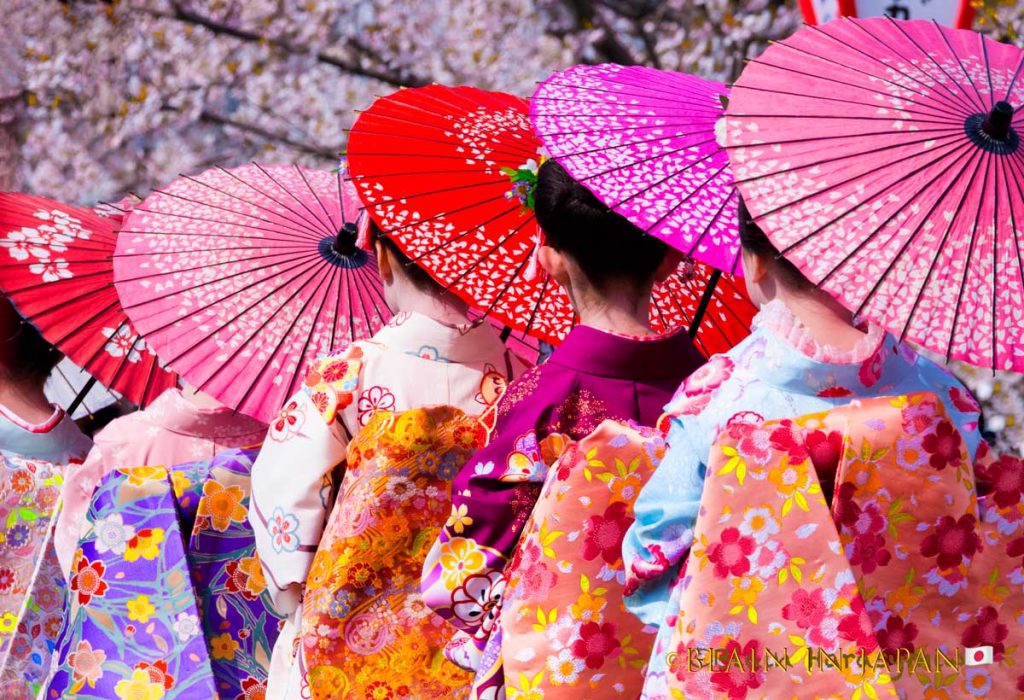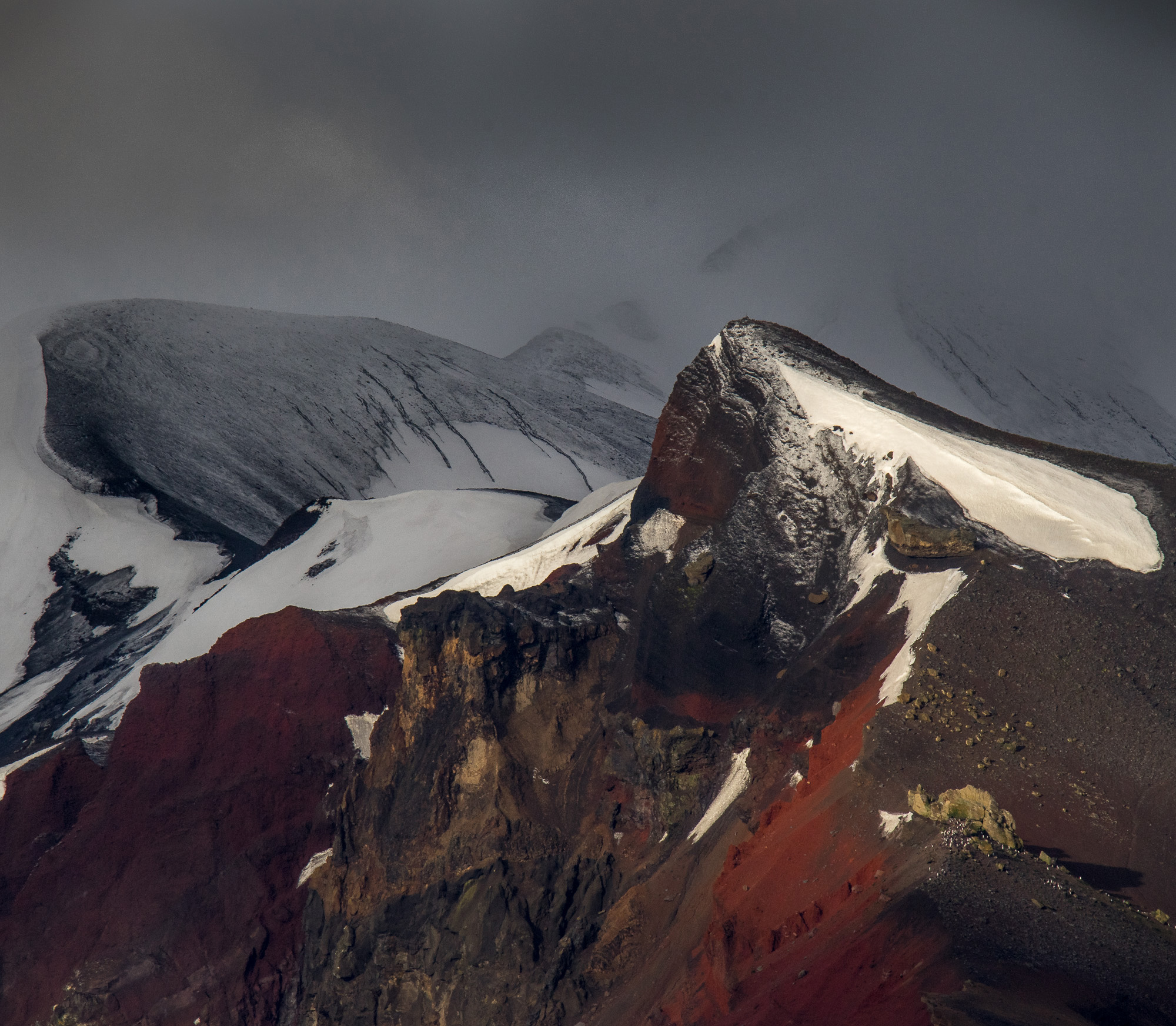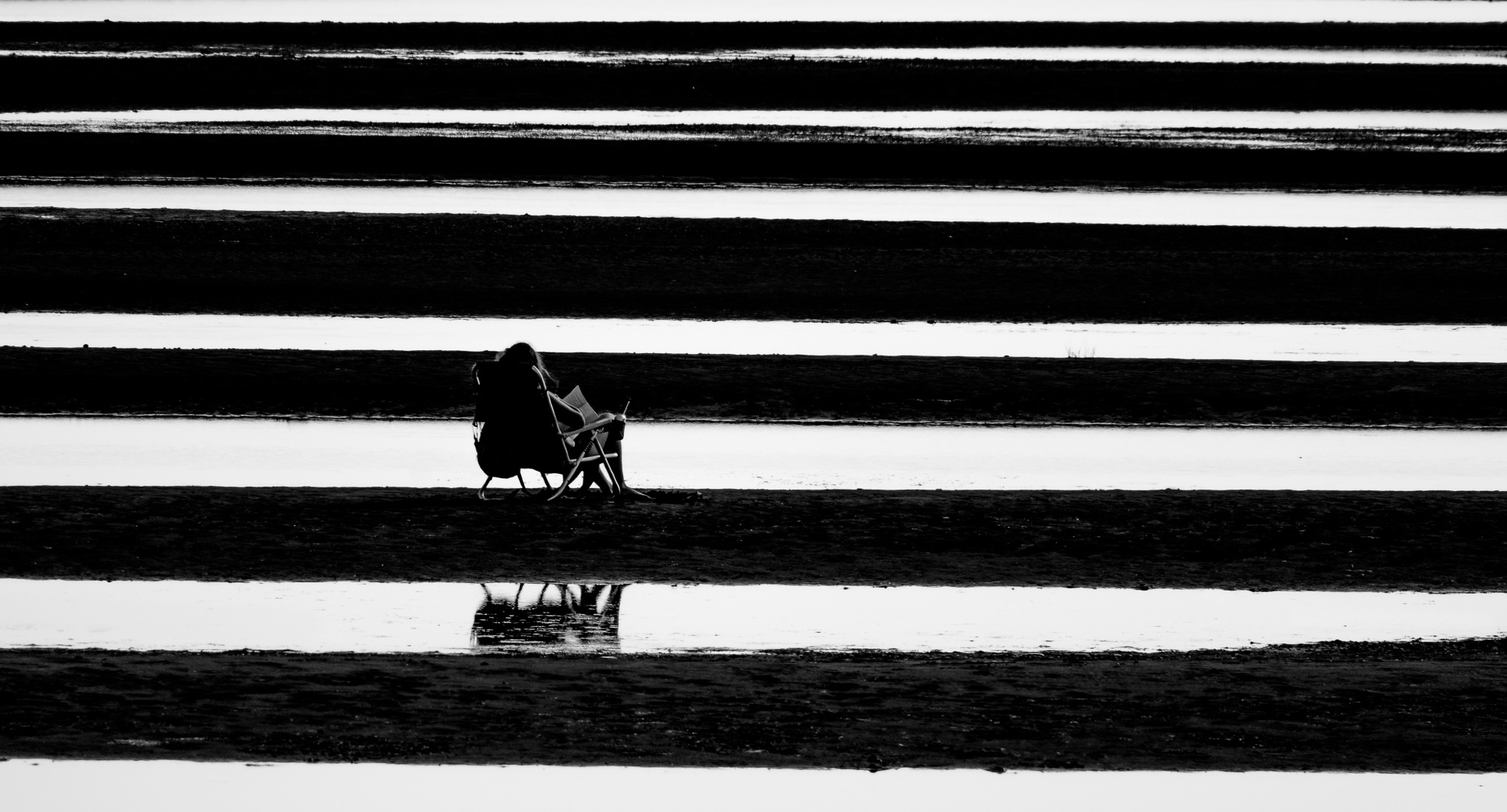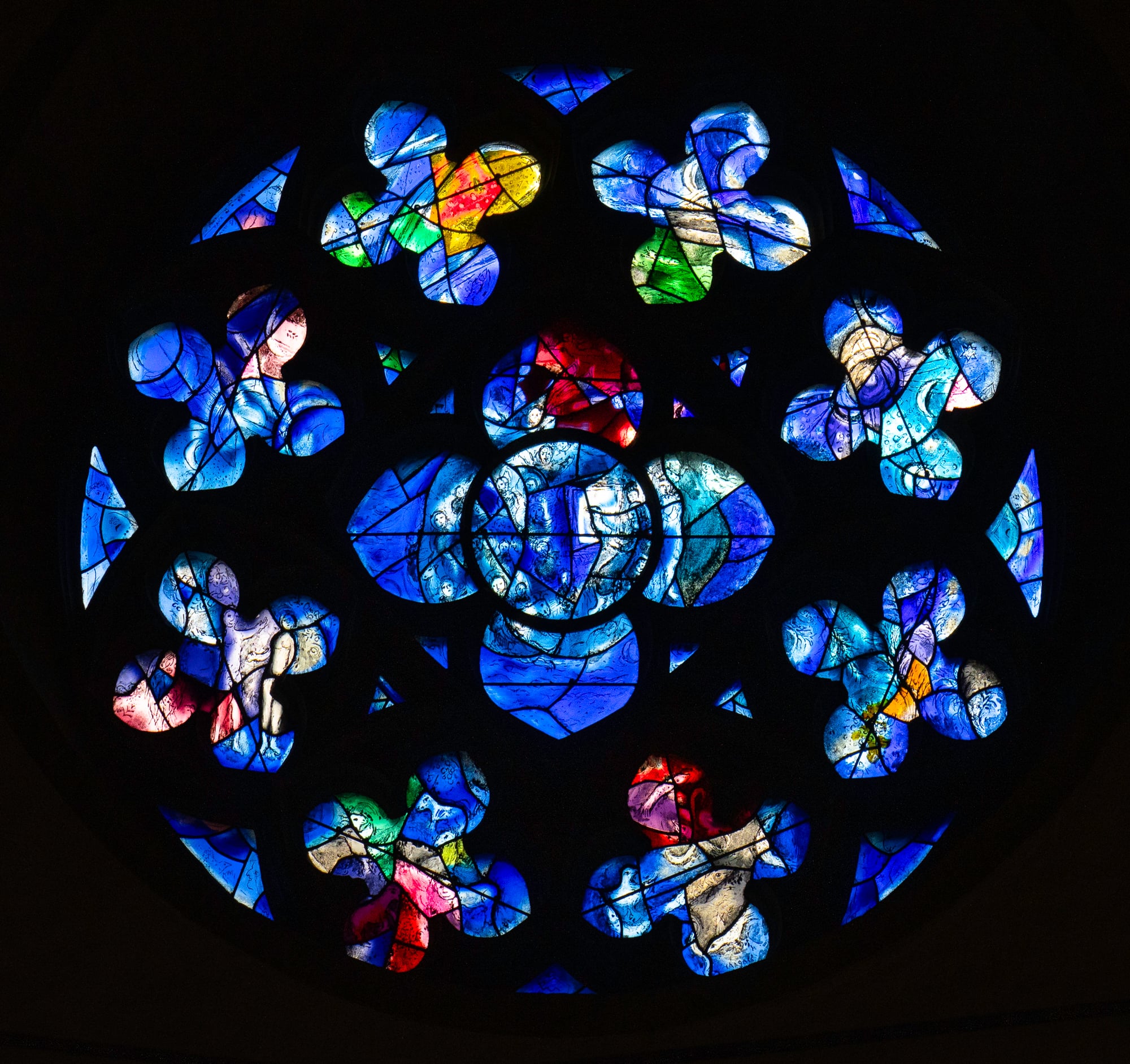Pinhole imagery may be photographyÃs equivalent of drawing with chalk. Simple. Cheap. Accessible to anyone. Capable of astonishing, sophisticated results. This is photographyÃs sleight of hand. The fact that we can produce a quality image on sensitized materials without a lens fascinates and inspires. Out of nothing comes something‚ and all that. Our work can be as studied and precise as traditional view camera photography or as spontaneous as loading some 1600 speed film in a 35mm camera fitted with a pinhole body cap and taking pinhole snapshots.
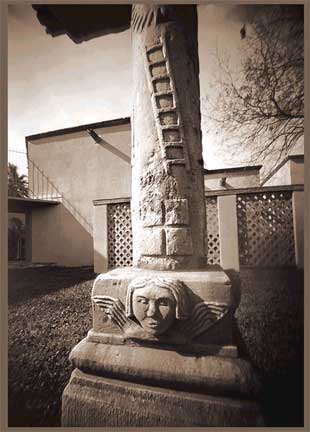
One of my first decent images. The camera was made from an empty box of 5×7 enlarging paper. The film was Kodak Commercial, unfortunately no longer manufactured, which was capable of excellent tonality and could be developed by inspection, as we do prints, under a conventional red-amber safe light. Enlarging paper and lith film can both be used as a negative material and developed by inspection. A decent, normal tonality can be produced on lith film by employing a dilute film developer, for example, D-76 diluted 1:3 or even more.
Getting Started
I have some things to say about the character of the pinhole image but letÃs get started. I will leave the technical details of image formation, how a pinhole actuallyƒ¬works,î to the references on myWeb Resources page.
Just about any camera or anythingfor that matter can be turned into a pinhole camera. A 35mm SLR. A view camera. Old 120 folder. Sheet film or enlarging paper boxes. Shoebox. Candy tin. Suitcase. A Volkswagen van. They have all been tried and succeeded. While many commercially made cameras are now available, you can see the wide range of types and prices at thePinhole Resource web site, I am a strong believer in make-it-yourself. This is a great part of the fun and sense of accomplishment.
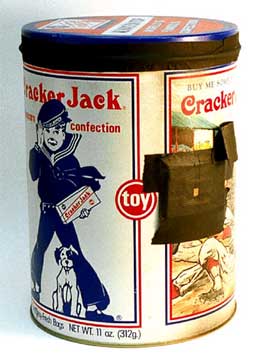
Save all those round holiday and gift candy and cookie tins. With their gentle curvatures and quality construction, they make great pinhole cameras. Refinements include matte board film retainers inside; and a T-nut can be glued through the bottom for a tripod socket. If the T-nut projects inside the tin, remember that it will cast a shadow on the film. That strip can be excluded in printing or the matte board rail canƒ¬hoistî the film above the level of the T-nut. Remember, also, to close off the center of the T-nut with tape; otherwise, light can come through and fog the negative.
What do I take pictures of? Anything you care to. No matter the format, this topic often stymies us, for so much excellent work has come before us. Worse, at many college programs, the cry is for originality-whatever that is. If we start by taking pictures of what interests us, our friends, our house, a favorite lake, our vacation, that lamp in the corner, and get immersed in the core elements of light, form, texture, all else will follow. DonÃt be afraid of trying something no one else has tried. More importantly, donÃt shy away from doing something whose potential seems long exhausted. Yes, I can talk up a storm with the best of them, but when it comes to art, I feel that images must precede ideas. This is our quiet time.
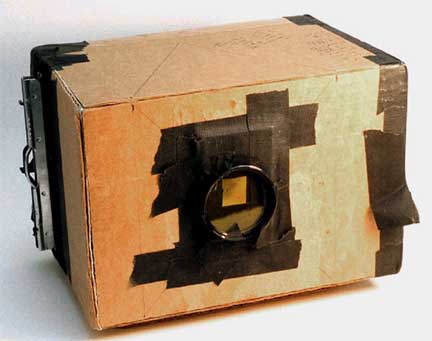
My bread and butter sheet film camera (this one is for 4×5 sheet film), built right around a conventional sheet film holder. Inside is foam board, including rails to guide and secure the film holder and its end flap once the slide is pulled. This last point is an important one. Otherwise, the film holder end can flip open, making it difficult or impossible to remove the holder. I made this mistake early on and have plenty of fogged films to prove it. The outside is made of pizza box cardboard. Regular ElmerÃs Glue (white glue) works great and is safe to handle, avoiding potentially hazardous volatile glues that can also melt foam board. Note the yellow filter taped over the pinhole and sight lines on top. A T-nut, available at any hardware store, glued into the bottom serves as a tripod socket.
Two excellent starter cameras are the classic round oatmeal box camera or any old folding camera that takes 120-size roll film. The gentle curved plane of the oatmeal box camera produces pleasing images on a relatively large size negative. As discussed below with theFall Colorimage, 120 film is an excellent starter format. Many cameras are available to be fitted with a pinhole, a wide range of film is available and it can be processed for us. We also get multiple exposures from one loading of the camera. In this format, I make an exception to my make-it-yourself rule, as two excellent starters cameras are available: a corrugated cardboard camera that comes ready to go with a quality laser-drilled pinhole (Available atPinhole Resource,PorterÃsand many other mail-order stores.); and theZero Imagecamera. While the price of theZero Visionwould cover a bit of film and processing, the camera features quality construction and has a wide following. TheZero Visionsite features excellent images done with this camera. (For more about these cameras, see links below.)
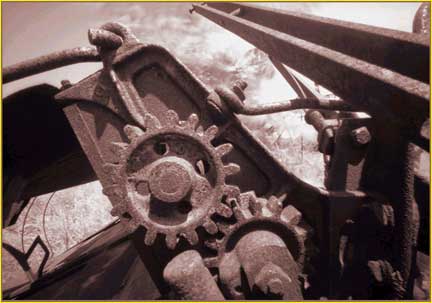
This image of a long-retired John Deere farm machine was shot on 5×7 black and white sheet film. This is my favorite pinhole format and demonstrates that pinhole images can have excellent detail, tonality and texture. Each camera has its quirks and personalities. When you find a pinhole that matches well with a given camera-donÃt take the camera apart and donÃt lose it, it can be harder to recreate than we imagine.
Pinholes can be made by careful puncturing of a disposable pie-plate or the brass shim stock found in hobby shops by a common sewing needle. Charts are available that equate needle size to the pinhole diameter needed for a specific distance from the pinhole to the film plane. Today, more precision made pinholes are also available throughPinhole Resource,Calumetand some individuals.
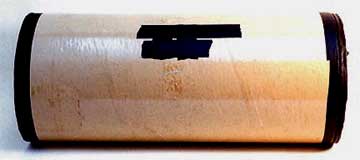
The curved film plane carried to a greater extreme; camera is fashioned of a mailing tube.
For single-load cameras, resin-coated enlarging paper (matte, without printing on back, is probably best), lith film, black and white sheet film, color negative film and color slide film will all work. Enlarging paper (and lith film) works amazingly well and it can be developed by inspection in a darkroom. The effective speed is about ASA 5, so exposures will be on the long side – great for subjects with some slow movement or multiple exposures where we move the camera position. Conventional film must be handled with all the regular safeguards, plus with the long exposures needed for many pinhole photographs, we often run up against reciprocity considerations. In this respect, T-Max 100 is noted for its outstanding reciprocity characteristics. Overall, it isnÃt that important. All pinhole exposures are to a great extent empirical, misses come with the territory, and after a while we develop a feel for how much exposure each camera needs with under different lighting conditions. This may be weird science but not an exact one.
What Do I Have?
It isnÃt completely accurate to speak of depth of field with the pinhole image, but itÃs overwhelming qualities are a pure geometric perspective and that each part of the image is rendered with the same degree of definition. This is why pinhole images have been described as having limitless depth of field. Something an inch away will be rendered as sharply as something a mile away. No lens that I know of can really equal this.
Still, compared to images formed by lenses, the pinhole image is less distinct and much lower in contrast. If we choose, we can counter this by using as large a negative as possible (Most pinhole imagesƒ¬lose itî when we try to enlarge them.), using one of the high contrast films in abundance these days, or developing for greater contrast. Our pinhole images need not lookƒ¬clichÈd,î with vignetting and a fuzzy, low contrast quality-unless we want them to do. By using quality pinholes, matched properly to focal length, and careful camera steadiness, exposure and development, our images can show marvelous detail, tonality and luminosity. Take your pick.
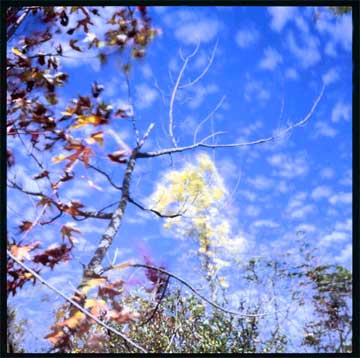
Taken on 120 color slide film. The camera was a Zeiss Ikon Nettar whose lens/shutter unit had gone belly up. These old folders, with their 645, 6×6 and 6×9 formats, can be made into excellent pinhole cameras. Advantages include solid construction, good film wind mechanisms and they usually have tripod sockets. As noted above, 120 film is a good starting place for pinhole photography: there are many camera possibilities, a great range of black and white, color negative and color transparency emulsions, the image is of a size that will bear modest enlargement, and film can be processed by a wide range of local and mail order laboratories. Regarding color: by careful exposure, we can get good images even on slide film. Also, while the pinhole image is inherently low contrast, most modern films have such great color saturation and contrast that the film andƒ¬objectiveî match well. The same can be said for using vintage, uncoated lenses-they yield fine images.
Refining Our Work Without Budget Busting
First, most cameras are extremely wide angle. Generally, much more so in the field than they seemed on the drawing board. Many of my images are taken just inches away from the subject. Watch out for the camera casting shadows on the image or otherwise obstructing the light. Still, get close, get close, get close applies gloriously to pinhole photography.
Overall, it is easy to work against conventions. Shooting right into the sun, multiple exposures, capturing slowing moving or re-positioned subjects, are all easily and naturally handled. We can have something like a movie camera and sophisticated view camera rolled into one.
Going further, interesting effects can be achieved by exposing a single sheet of film with a multiple pinhole camera, moving the position of the pinhole off-center or moving the film plane off-perpendicular-whether curved or slanted. It is also possible to combine a pinhole exposure with a lens exposure. You get the idea, although it seems to work better if these refinements flow naturally from our interests and the subject at hand. I know when I start with aƒ¬gimmickî rather than a subject, I fail much more often than I succeed. Even in pinhole photography, an honest effort will show through.
In summary. Pinhole photography can be inexpensive. It captures life in ways no lens possibly could. If we choose, we can refine and control it like any other discipline of photography. Enjoy the magic.
Images and Text‚© 2001David F. Stein
SOME LINKS
The Oatmeal Cameraby Stew Woodruff:
120 Corrugated Cardboard(120 Pinhole Lochkamera 6×9 Wide Angle):
WEB RESOURCE PAGE
I have posted aResource Pageon my web site, providing links to fuller information on camera building, film exposure and the nature of the pinhole image; artists working with pinhole images; books related to pinhole and some alternative processes stuff.
MY PINHOLE START PAGE
Here are some pinhole images onmy web site.
SOME RECENT WORK
Some of my images are posted on thePinhole VisionsPinholerÃs Gallery. I hope you take the time to visit.
A PERSONAL NOTE
I live in Farmington Hills, Michigan and am a commercial writer, as well as sometime artist and photographer. Like many of us, I would like to spend more time with art and picture-taking. In recent years, a random purchase ofIvor MatanleÃsbooks on camera collecting re-awakened my love of photography. I have enjoyed not only pinhole photography but also making images with cameras from as great as one hundred years old. I enjoy taking classes at art schools and institutes that offer adultƒ¬enrichmentî classes in a workshop format. In San Antonio, IÃve attended theSouthwest Craft Centerand theSan Antonio Art Institute; in Syracuse, New York, theLight Work Galleryand community darkroom is outstanding; and, here in the Detroit area, IÃve worked with theBirmingham-Bloomfield Art AssociationandCity of Southfield Continuing Educationprograms. Community colleges can be a great place to pursue photography, if they offer adult education, non-graded courses.
David F. Stein
DISCLAIMER
This article describes techniques and practices that have worked for me. Readers are fully responsible for their own activities in photography, as well as the supervision of others.
Read this story and all the best stories on The Luminous Landscape
The author has made this story available to Luminous Landscape members only. Upgrade to get instant access to this story and other benefits available only to members.
Why choose us?
Luminous-Landscape is a membership site. Our website contains over 5300 articles on almost every topic, camera, lens and printer you can imagine. Our membership model is simple, just $2 a month ($24.00 USD a year). This $24 gains you access to a wealth of information including all our past and future video tutorials on such topics as Lightroom, Capture One, Printing, file management and dozens of interviews and travel videos.
- New Articles every few days
- All original content found nowhere else on the web
- No Pop Up Google Sense ads – Our advertisers are photo related
- Download/stream video to any device
- NEW videos monthly
- Top well-known photographer contributors
- Posts from industry leaders
- Speciality Photography Workshops
- Mobile device scalable
- Exclusive video interviews
- Special vendor offers for members
- Hands On Product reviews
- FREE – User Forum. One of the most read user forums on the internet
- Access to our community Buy and Sell pages; for members only.






